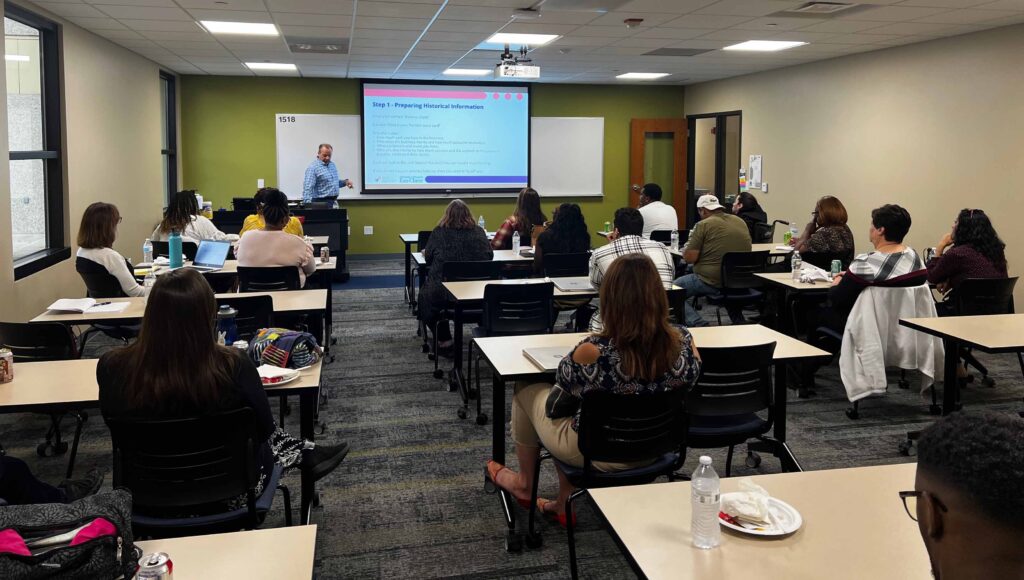The SBDC’s Wisconsin Capital Access Clinic helped make the topic of small business accounting more easily understandable at the lunch and learn hosted by the SBDC at Rock County.
“I’m so excited to represent the SBDC and support small businesses in Rock County,” said Kathryn Jackson, Rock County SBDC business consultant. “The Capital Access Clinic is a truly helpful resource making a real difference for small businesses. The success of this event is a reminder that entrepreneurs are determined and dedicated to their own success. I look forward to planning more educational events in Rock County.”
Luke Kempen, the Capital Access Clinic Director, presented points every small business owner should know about reading and understanding their financial statements. He also shared with a full classroom of participants at Blackhawk Technical College some specifics on how to prepare a presentation for potential lenders.
“I had a great time working with the class, discussing financial statements and tips to getting the participants’ businesses funded, “ Kempen stated. “The group asked some great questions that led to thoughtful discussion on what lenders are looking for from potential clients. I and the Capital Access Clinic look forward to assisting these clients as they move forward in the process!”
“Many thanks to Blackhawk Technical College for allowing us to host the workshop at their Central Campus,” Jackson said. “The SBDC is grateful for their continued support of Rock County entrepreneurs.”


The three key business financial statements are:
- Income Statement – This is often called a Profit and Loss statement or a P & L statement.
- The income statement is a summary of the financial activity of the operations of a business for a period of time.
- The statement should show Sales – Cost of Goods Sold = Gross Profit
- The statement should also show Gross Profit – Operating Expenses = Net Income
- Tip: Record items in your expense categories consistently and use percentages for comparisons.
- What the Clinic provides: The clinic can help entrepreneurs understand how Gross Profit percentages are a key performance indicator.
- Cash Flow Statement –
- The cash flow statement is a summary of the changes in cash and the cash activity for a period of time.
- You are looking to determine Cash that Came In – Cash that Went Out = Net Cash Flow
- Tip: If you start with net income, make sure to add back depreciation as it is a non-cash expenses and then take away the principal payments on debt to arrive at net cash flow.
- What the Clinic provides: The clinic can help entrepreneurs understand how interest and principal payments affect cash flow.
- Balance Sheet –
- The balance sheet is a snapshot of the financial position of an entity at the end of a specified period of time.
- The sheet uses components of the Income Statement and Cash Flow Statement to give a “scorecard” of where the business is.
- The sheet should show Assets = Liabilities + Equity
- Tip: Do your bank reconciliations each month and compare balances in the accounts on your balance sheet to third party documentation such as bank statements, loan statements credit card statements, etc..
- What the Clinic provides: The team can assist entrepreneurs in understanding the relationship of the activity statements to the balance sheet.
These are just a few quick tips from a robust presentation, but they are a good place to start.
What’s next?
- If you’re a small business, find out about how all these services can improve your business by connecting to the Capital Access Clinic through your local SBDC.
- If you’re an entrepreneurial support organization or community partner hoping to set up an event like this in your community, reach out to the Capital Access Clinic.

